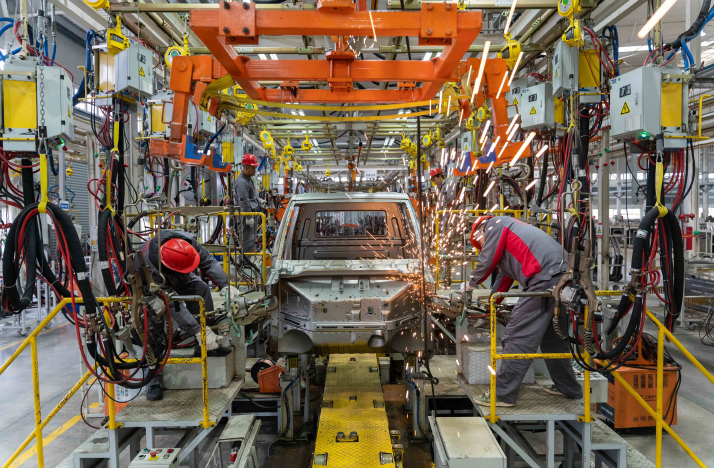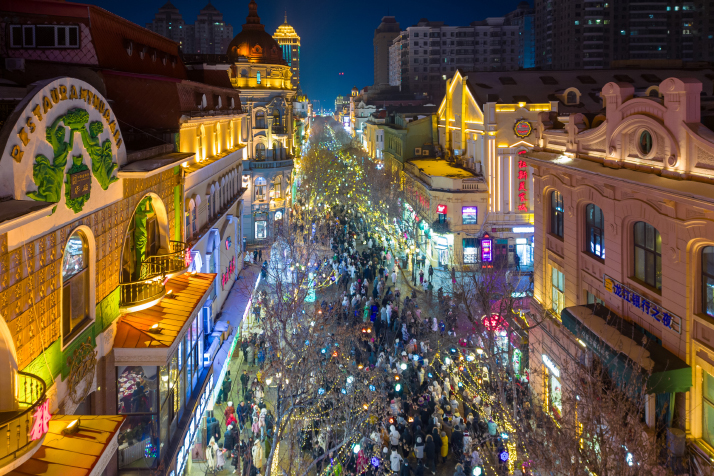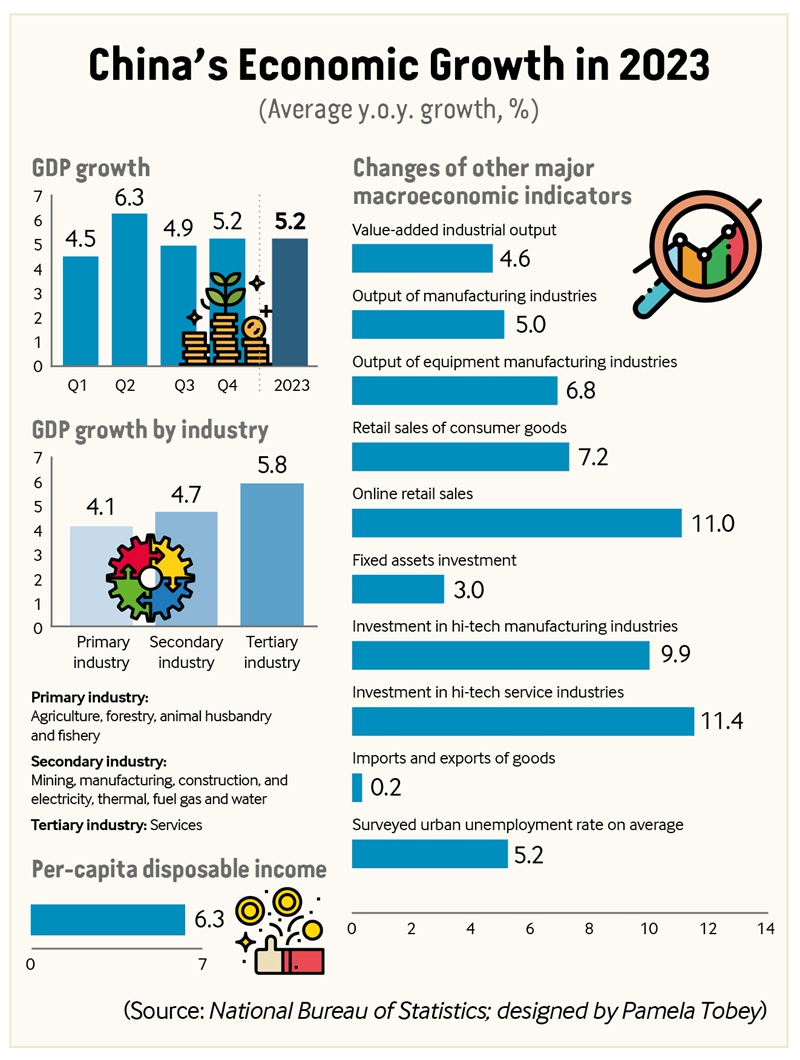
China’s GDP posted a year-on-year growth of 5.2 percent to 126.06 trillion yuan ($17.52 trillion) in 2023, surpassing the country’s official annual target of around 5 percent set last March, data from the National Bureau of Statistics (NBS) showed on January 16.
GDP matters because it gauges the size and health of an economy within a given period of time.
Despite external and domestic difficulties, China met its annual growth targets and saw rebounds in many economic sectors, Kang Yi, head of the NBS, told a press conference on January 16.
China’s growth outpaces the estimated global rate of 3 percent. Its contribution to global GDP growth is expected to reach over 30 percent in 2023, putting it at the top of the world’s major economies, Kang said.
As Chinese Premier Li Qiang told the World Economic Forum Annual Meeting 2024, which ran from January 15 to 19, “Choosing the Chinese market is not a risk, but an opportunity.”
The country’s large market, expanding talent pools and new growth drivers such as new urbanization and green transition enable it to continuously contribute to global trade and investment growth.

Bouncing back
Key economic indicators, including consumption and manufacturing, rebounded significantly in 2023 from the impacts of the COVID-19 pandemic in recent years.
“Despite weak external demand, consumption and investment provided major support for the Chinese economy in 2023,” Wen Bin, chief economist at China Minsheng Bank, told Beijing Review.
Consumption was a major economic driver last year.
In 2023, retail sales of consumer goods, a major indicator of China’s consumption strength, climbed 7.2 percent year on year to a record high of 47.15 trillion yuan ($6.63 trillion). Final consumption expenditure contributed to 82.5 percent of China’s GDP growth, up 43.1 percentage points, according to the NBS.
Last year, spending on services saw great resumption and consumption upgrading continued, Kang said.
Brick-and-mortar stores and the e-commerce sector further boomed.
Self-enjoyment, health-consciousness, sustainability and the silver economy each became trends in their own right.
China’s box office raked in 54.915 billion yuan ($7.63 billion), up 82.6 percent from 2022, the Chinese authorities said.
China’s tourism consumption largely recovered in 2023, as many domestic cities went viral on Chinese social media platforms with distinctive food or entertainment spots, attracting large numbers of visitors.
Last summer, many Chinese travelers flocked to Zibo, a foodie hotspot in Shandong Province, to bite into the mouthwatering local barbecue featuring grilled meat wrapped in crispy pancakes with scallions.
Whereas tropical regions in south China have long attracted people seeking warmth in winter, Harbin, the capital of Heilongjiang Province in northeast China, emerged as another popular tourist destination in the winter of 2023, with a range of ice and snow activities as well as local hospitality showcased in short videos posted by many influencers.
According to a report released by leading Chinese travel agency Trip.com Group in early January, bookings for Harbin during the 2024 Spring Festival holiday, which will last from February 10 to 17, are projected to jump by over 14 times year on year.
From the beginning of 2023, outbound tourism took off once again. Last January, China resumed outbound group travel to 138 countries and regions, including Japan and the U.S., according to China’s Ministry of Culture and Tourism. Data from Trip.com showed that, as of December 26, 2023, outbound tourism orders had increased fivefold year on year.
And after three years of sluggish growth, inbound tourism, too, finally started picking up. For example, the ice city of Harbin has been a magnet for international tourists, especially for travelers from Malaysia, Thailand and Russia. According to Trip.com, in the two weeks from late December to January 10 this year alone, inbound tourism orders to Harbin jumped 42 percent year on year.
In November 2023, Chinese authorities introduced visa-free entry for up to 15 days for travelers holding ordinary passports from France, Germany, Italy, the Netherlands, Spain and Malaysia. The pilot program took effect on December 1, 2023, and will run until November 30, 2024.
As of January 9, 147,000 passengers from these six countries had visited China under the visa-free policy, Mao Xu, Director General of the Foreigners Management Department of the National Immigration Administration, told a press conference on January 11.
It will still take time for inbound tourism to fully resume, as shrinking global trade and investment over the past three years have led to a decline in the number of international travelers, Dai Bin, Dean of the China Tourism Research Institute, told China News Service, adding that visa-free policies will make it easier and more convenient for international tourists to visit China.
China’s manufacturing industry saw resilient growth last year, providing products and services to the international market through stable supply chains and technological innovation. NBS data showed that China’s value-added industrial output, an important economic indicator, went up 4.6 percent year on year in 2023.
China’s auto production and sales in 2023 both hit a record high to top 30 million units each, according to the China Association of Automobile Manufacturers. Last year, sales of electric vehicles (EVs) in China totaled 9.495 million units, accounting for more than 30 percent of the total sales of new vehicles in the country.
Chinese automaker BYD became a leading seller of pure EVs both in China and the world last year. In the fourth quarter of 2023, the company sold 526,409 pure electric cars, surpassing Tesla’s 484,507 in the same period.
In 2023, investment in China’s manufacturing industry increased by 6.5 percent year on year, while that in the real estate sector dropped by 9.6 percent on a yearly basis. “It suggests that major pillars of the Chinese economy are shifting to real-economy sectors, especially the services and manufacturing industries,” Pan Helin, a researcher with the International Business School of Zhejiang University, told Beijing Review.
Greater openness
“From a small power bank to a large green electric car, ‘Made in China’ products are able to meet diverse demands,” Wang Lingjun, deputy head of the General Administration of Customs of China (GACC), told a press conference earlier this month. GACC data showed that China’s total imports and exports of goods rose 0.2 percent year on year to 41.76 trillion yuan ($5.8 trillion). Exports were up 0.6 percent from a year earlier.
In 2023, China’s exports of solar batteries, lithium-ion batteries and EVs exceeded 1 trillion yuan ($138 billion) for the first time, up 29.9 percent year on year, maintaining the world’s largest scale. The number of consumers making purchases through cross-border e-commerce platforms reached 163 million last year, the GACC said.
Last October, the Chinese Government announced complete lifting of restrictions on foreign investment access in the manufacturing sector and pledged to explore the further opening up of the services sector.
Data from the Ministry of Commerce showed that actual use of foreign direct investment declined by 10 percent year on year in the first 11 months of 2023.
As Wang Xiaohong, deputy head of the information department of the China Center for International Economic Exchanges, told People’s Daily newspaper, the decline could be attributed to international uncertainties caused by regional conflicts and weak global demand.
Industrial upgrading and improving labor costs in China are causing labor-intensive industries to relocate to other countries.
Some international companies are also pulling out of China as the Chinese market becomes more competitive. But foreign-backed companies with strong competitiveness and a willingness to explore opportunities in China may still see it as a key market, Wang said.
Narrowing the gap
Small cities and counties in China have become blue ocean markets.
According to the National Development and Reform Commission, the population of China’s county-level cities and counties accounts for about 30 percent of the country’s total permanent urban population.
In the third quarter of 2023, U.S. coffee chain Starbucks, for instance, opened 326 new stores in China, many of which are located in counties and small cities.
Chinese coffee chains Luckin Coffee and Cotti Coffee are also exploring these lower tier markets.
NBS data showed that China’s per-capita disposable income was 39,218 yuan ($5,451) in 2023, up 6.3 percent in nominal terms from a year earlier. The per-capita disposable income of China’s rural residents grew faster than that of their urban counterparts last year.
The surveyed urban unemployment rate in China averaged 5.2 percent in 2023, down 0.4 percentage points from 2022. The number of rural migrant workers totaled 297.53 million in 2023, with their average monthly income up 3.6 percent year on year to 4,780 yuan ($664).
The McKinsey Global Institute, a business and economics research organization, estimated late last December that the number of upper-middle and high-income households, as defined by official World Bank classifications, in China could reach 200 million by 2025 and 260 million by 2030. The number of high-income cities is expected to reach 82 by 2025 and 93 by 2030.

Outlook: make or break
But China’s economy still faces many challenges this year, such as slowing consumption growth. The strong boost from post-pandemic “revenge consumption” is fading fast, said Lu Ting, chief China economist at Japan-based global financial services group Nomura, at an economic forum held by Tsinghua University in early January.
Incentives to boost consumption will not be a sustainable driver. The government needs to introduce more preferential policies for underprivileged groups, especially senior citizens in rural areas, who account for about two thirds of China’s elderly population, Lu said.
According to Lu, global economic growth will slow down in 2024, and some developed economies may see only half the growth rate of 2023 this year, which in turn will put more pressure on China’s exports.
“As Chinese enterprises’ production and investment in emerging industries such as EVs and batteries grew strongly in 2023, we now see ‘overcapacity,’ which is causing the prices of some materials and products to fall—which will in turn affect investment growth in these industries this year,” Lu said.
To achieve more balanced industrial growth, Chinese companies should continue to innovate and optimize their business layout, he added. –The Daily Mail-Beijing Review news exchange item




